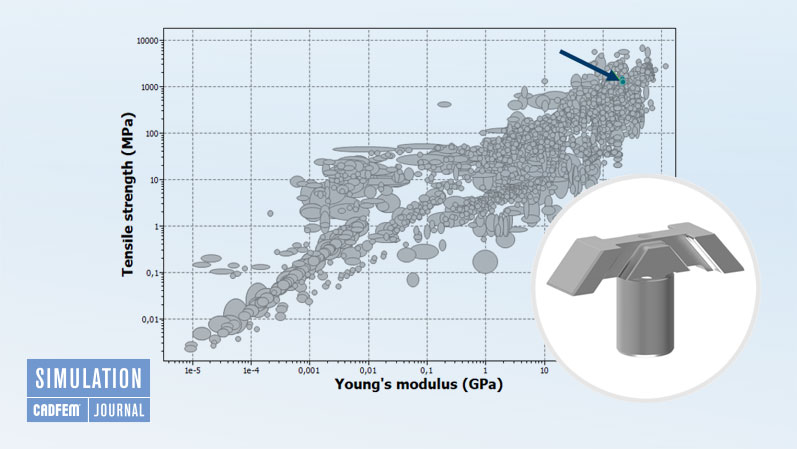Reliably develop customer-specific wave springs with FEM simulation and metamodel
Easily calculate springs
Springs as machine elements are generally well known and their behavior is relatively easy to calculate. However, the wave spring is considered an exception due to its more complex geometry. Its design and production are significantly more complex than other springs. For this reason, the BAUMANN company in Switzerland is now breaking new ground. In a project supported by Innosuisse, BAUMANN is working with Eastern Switzerland University of Applied Sciences (OST) to develop a new type of workflow using Ansys simulation software.
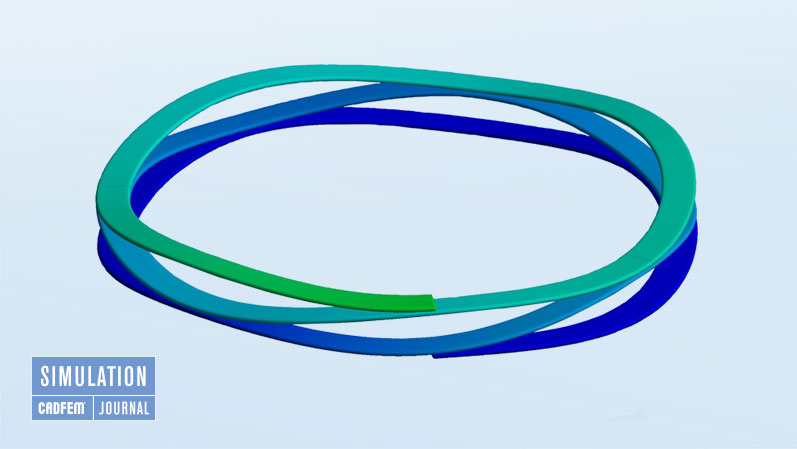
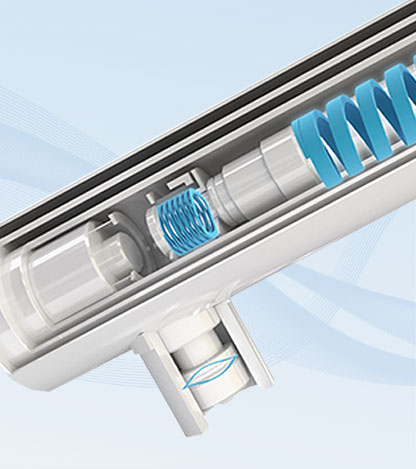
The BAUMANN Group has stood for Swiss precision and quality for more than 135 years, developing from a local generalist into a global specialist. Springs, stamped parts and other special parts are the focus of the range of products for automotive construction as well as industrial and medical use. The aim is to optimally serve the customer with a solutions-oriented approach, which often goes far beyond springs.
Ideal in applications with tight space constraints
Wave springs enable a reduction in operating height of up to 60 percent compared to traditional coil springs, while maintaining the same spring force. The reason for this lies in the compact design of the springs, which is based on a sinusoidal wave shape combined with tangential points of contact.
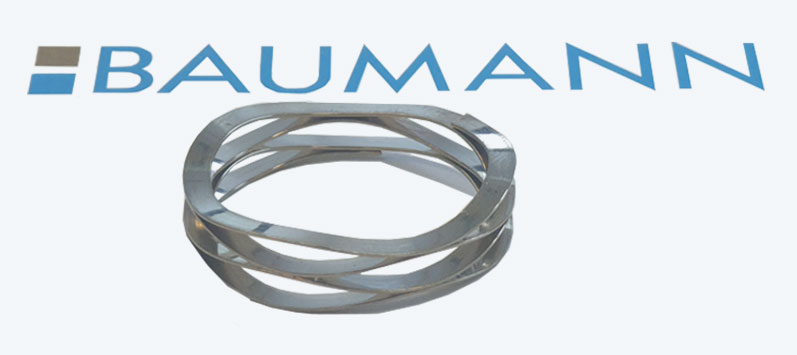
The one-piece manufactured wave springs have a flat characteristic curve, corresponding to an almost uniform force application, which is advantageous for many use cases. The wave springs manufactured by BAUMANN are suitable for spaces with diameters from 5 to 250 millimeters in static and slightly dynamic applications. They are characterized both by the diameter and the number of coils and waves as well as by the width and thickness of the wire and the material characteristics. All this together influences the force-displacement characteristic specific to each spring.
Wave springs are versatile in their application
Customers of BAUMANN can choose from a wide range of different types of wave springs, for example for door opening systems in cars, valves and switches, as well as administering medication. “We support our customers in their product strategies with our application-specific expertise,” reports Martin Oschwald, Head of Research and Development at BAUMANN. “Our solutions for customers are precisely tailored to the design and purpose of the device in question. For example, our products enable defined compression and rebound in valve systems or ensure braking in powered liftgate systems.” Traditionally, customer requests were defined by specific geometric dimensions and usually an operating point on the force-displacement curve. Recently, however, performance requirements have increased, and designs have become more specific. “For us, this leads to higher challenges in the design of the springs and, moreover, we want to be prepared for future requirements,” explains Martin Oschwald. “We still see a lot of potential in the market for wave springs. But for reliable offers, numerous work steps are often still necessary. In addition, the cost pressure is considerable, so we want to tap into further optimization potential through digitization. Our goal is to reduce the lead time from customer inquiry to binding offer from weeks to days.”
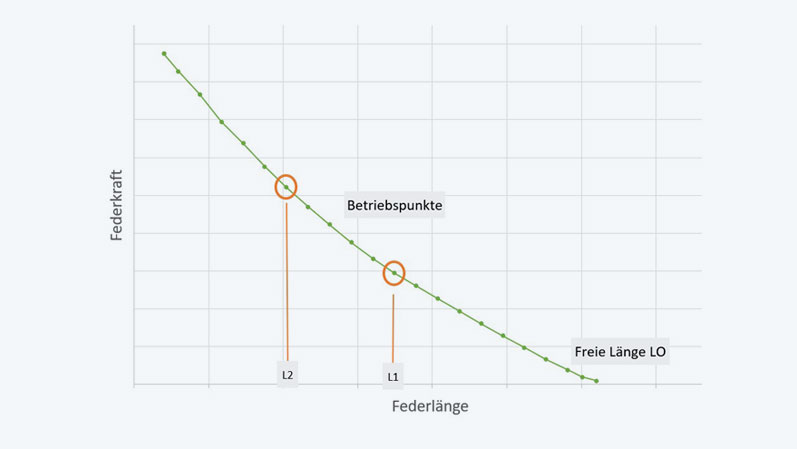
Complex creation of prototypes
Previously, the design was carried out using a simple model approach, on the basis of which an initial offer was prepared with technical reservations. If the customer ordered a prototype, spring specialists at BAUMANN started manufacturing the first prototypes. Their design was based on an Excel-based layout environment, in which many empirical values were stored. With this method of working, an iterative approach was part of daily practice. Only when an acceptable solution was found in this way could sample production start to verify manufacturability. “Despite increasing requirements, the complexity in the design and production of wave springs should remain manageable for us,” explains Martin Oschwald. “That's why we have started a project together with Eastern Switzerland University of Applied Sciences to optimize our processes. The project was supported by Innosuisse and took two years. The aim of this project was to make our processes faster, more standardized and more digital.”
Joint project with Eastern Switzerland University of Applied Sciences
Together with the Institute for the Development of Mechatronic Systems (EMS) in Buchs, the wave spring as well as its forming process in production were analyzed and modeled in the Ansys simulation environment. The simulation of static-mechanical and dynamic systems is one of the core competences of the EMS Institute. Through such industry-oriented research questions, innovative technologies and acquired knowledge are transferred from the university of applied sciences to the local industry. Important questions during the project included which spring parameters have which influence for the design? How does the spring behave on the processing machine? How can digital and real processes be aligned to obtain reproducible settings for manufacturing? The new processes should be designed in such a way that employees can focus on the value-adding activities in the future. At the same time, the added value for the customer should be increased.
The digital model of the wave spring
In the first step of the project, a parametric FEM model (Finite Element Method) of a wave spring was generated with the Ansys simulation software based on the existing CAD geometry. In addition to the characteristic features of the spring - such as diameter, number of coils and waves, width and thickness of the wire as well as the material properties - other influences were also taken into account in the simulation, including pretension and setting behavior. The workflow was modeled in an extension of the simulation environment designed with ANSYS ACT (Application Customization Toolkit), providing BAUMANN's engineers with an application-specific user interface and a fully automated calculation process for the design of the wave springs.
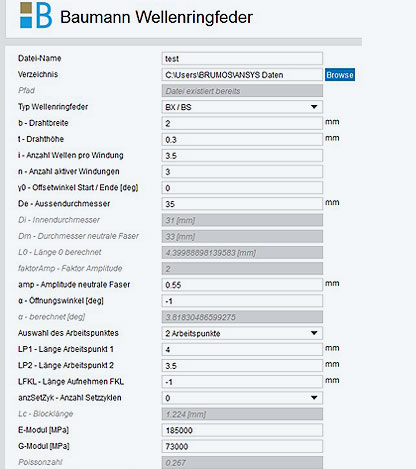
This simplifies the effort enormously, since the simulations directly provide the necessary data on the stresses that occur and for the spring characteristic for the evaluation of operating points. Another plus point is the fully parametric FEM model, which makes it very easy to perform parameter studies of simulations. This allows the values of the characteristic features to be varied and combined as needed in order to learn more about the behavior of the spring variants and to find an optimal solution.
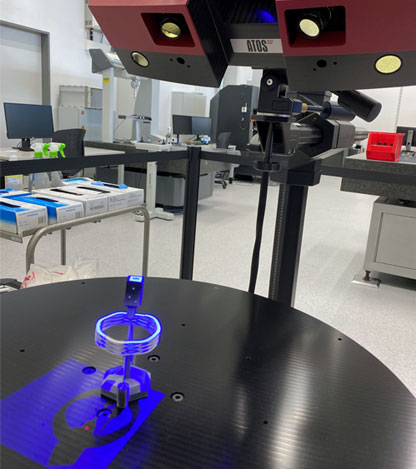
Model verification on the test bench
Another important aspect is the verification of the simulation results with real tests and measurements. This is the basis for a reliable comparison of real, measured spring data with the results of the virtually constructed and simulated springs. “So that we don't compare apples with oranges, the actual geometry of the spring must first be recorded for the simulation using a suitable method, in this case the stripe light projection,” Martin Oschwald emphasizes. “Simply taking the theoretical target CAD geometry into account is not sufficient and could lead to distorted comparison results.”
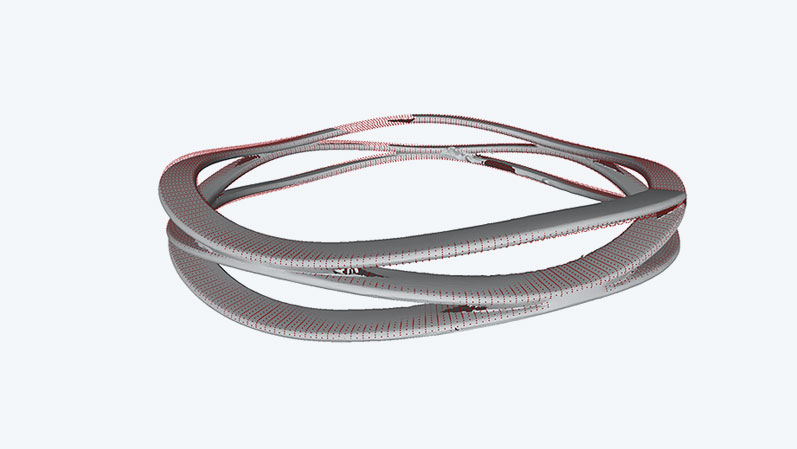
Likewise, the axial preloads that occur during manufacturing are also taken into account in the comparison. The same applies to the deflection and settling behavior, which can also be simulated. All in all, the head of research and development at BAUMANN is very satisfied with the comparison of the results of testing and simulation, since a good conformity could be established. This paves the way for the use of FEM simulation as a standard for the design of wave springs.
The optimizer keeps an eye on various targets
“One of the biggest challenges for us is finding an optimal solution for the various needs of the customer while not losing sight of our interests as a manufacturer,” explains Martin Oschwald. “Until now, we have followed a manual, iterative approach, which often takes a long time and does not always lead directly to the desired goal. That's why we have looked into new methods, including the Metamodel of Optimal Prognosis, which is included in Ansys optiSLang.” This allows product behavior to be improved in a targeted, fast and cost-efficient manner through variant studies. Sensitivity analyses enable the identification of the relevant parameters. Using response surfaces, the correlations between the design variations and the varying product properties can be determined and clarified in seconds instead of days. It is also possible to consider multiple optimization objectives simultaneously, using evolutionary algorithms to search the result space. In this way, solutions for wave springs can be found that achieve the values that BAUMANN was aiming for, both in terms of functionality and manufacturing costs. So far, this method has only been used in a few areas at BAUMANN, albeit with a high success rate. Therefore, its utilization will be expanded step by step.
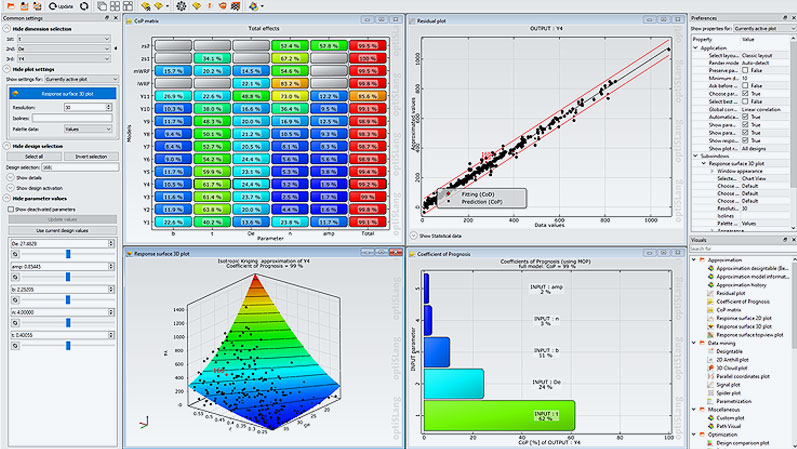
Digital models for production processes
“The processes for production, specifically the forming operations in the manufacture of the springs, are also to be improved with simulation support. Here, the question of the required input parameters for the desired wave springs is the focus of interest. The spring diameter to be produced is calculated using simulations, with the position of the forming tools playing a decisive role, so that the position tolerance is kept as small as possible. Simulations are also used to analyze the generation of the desired wave in order to be able to further improve the excitation by machine parameters. Spring specialists are interested in which parameters have which influence on the expression of the wave geometry of the spring. So far, these simulations have mainly been carried out in the 2D range and provide a better understanding of the manufacturing processes. However, the long-term goal is to gain more insight into which specific input values are required to obtain the desired characteristics of the respective wave spring.
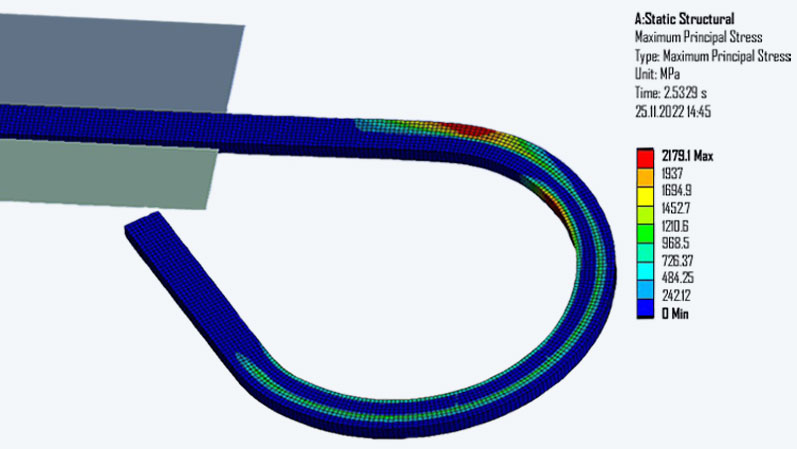
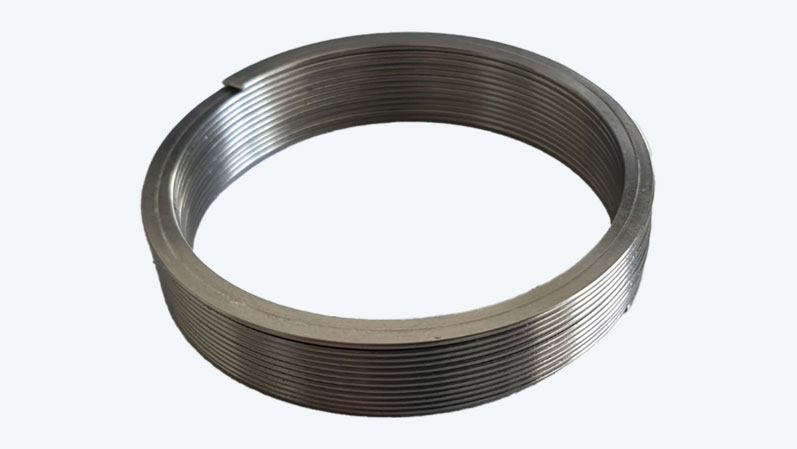
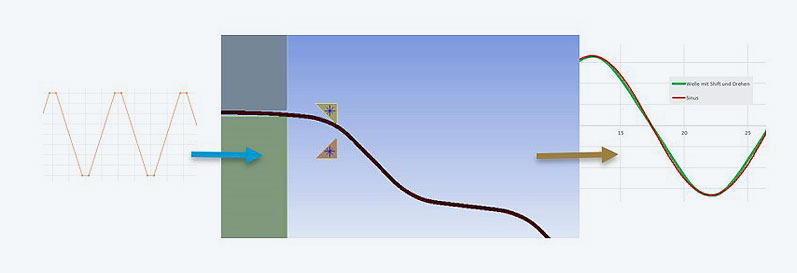
Continuous workflow developed
The goals achieved so far within the Innosuisse project, which BAUMANN has tackled together with OST, are very promising. The head of research and development at BAUMANN points to the general opportunities that have arisen as a result of the project: “It gave us broader access to the latest technologies and allowed us to test methods that were previously unknown to us. The innovative approaches from the university sector helped us to implement things that we would not have been able to do in our normal day-to-day work. The most important prerequisites for success were the time needed to deal intensively with the topic as well as the openness to change and innovation at all levels in order to jointly develop a company vision for integrating the new technologies.” With this in mind, the processes for the production of wave springs were comprehensively analyzed and the potential for redesign was identified. This required developing, building and implementing new types of workflows. Through standardization, optimization and digitalization, the spring specialists achieved greater process reliability and were able to accelerate the workflows. In addition, the ability to collaborate with external partners and universities was also improved. “The most important thing for us was to develop technologies that have the potential to significantly shorten the offer process, and that’s what we’ve achieved,” Martin Oschwald explains. “If we assume only one day of savings per offer, that already amounts to a time saving of 100 days for 100 offers per year. Furthermore, with the parameter analyses that we carry out with Ansys optiSLang, we are also able to keep the different optimization targets directly in view. Another important aspect of the continuous development is that the methodology and technologies we are now successfully using for the wave springs can be transferred to other types of springs. This means that in the future we will increasingly be able to do away with lengthy and inefficient design processes and focus on achieving our goals in a direct way.”
Martin Oschwald, Head of Research and Development at BAUMANNWith simulation and additional parameter analyses using Ansys optiSLang, we are able to quickly and confidently create designs for the desired wave springs, keeping the various optimization goals in mind.

BAUMANN Springs Ltd.
Martin Oschwald
Head of Research and Development
martin.oschwald@baumann-group.com
Author: Gerhard Friederici
(CADFEM Germany GmbH)
Image: © BAUMANN Springs Ltd.
Publish: March, 2023
Contact CADFEM





